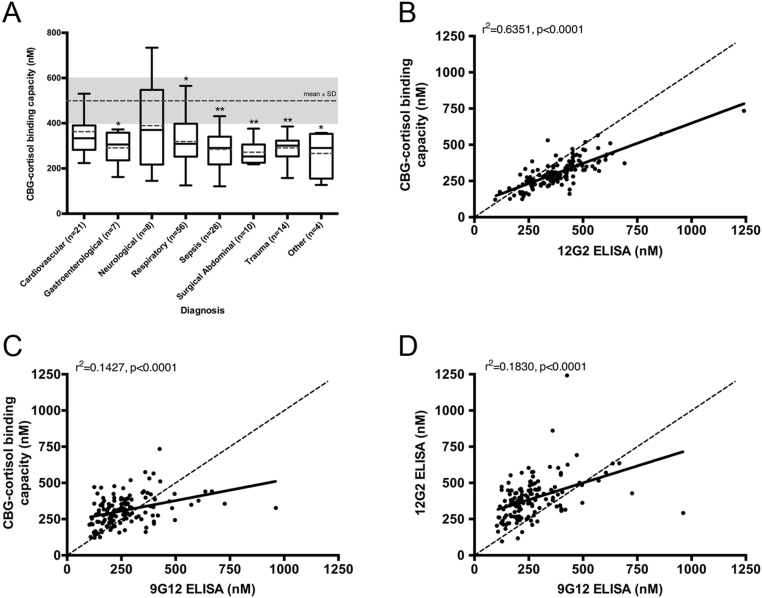Figure 4.
In ICU patient samples, decreased cortisol-binding capacity levels are observed, but a high correspondence with 12G2 ELISA values suggests RCL-cleaved CBG is not present. (A) Plasma CBG-cortisol binding capacity in various ICU patient populations. Box plots for each patient group display the maximum, third quartile, median, first quartile and minimum, with the mean included as a dashed line. CBG-cortisol binding capacity values were compared to the mean of a healthy control population (mean ± s.d., dashed line and shaded grey), and significant differences were detected (main effect of diagnosis by ANOVA, P = 0.0039). Significantly lower CBG levels were found in patients with gastroenterological, respiratory and other diagnoses (*P < 0.05), as well as individuals with sepsis, surgical abdominal and trauma diagnoses (**P < 0.01). Data in A is presented as mean ± s.d. Dunnett’s post hoc: *P < 0.05, **P < 0.01. Plasma CBG levels were measured by cortisol-binding capacity (B), 12G2 (C) and 9G12 (D) ELISAs, and data were analyzed using linear regression, with r 2 values and P-values provided with each graph. (B) A strong correlation was found between cortisol-binding capacity and 12G2 ELISA values (r 2 = 0.6351). (C) Weak correlations were observed between 9G12 ELISA and cortisol-binding capacity (r 2 = 0.1427) or between the (D) 9G12 and 12G2 ELISA values (r 2 = 0.1830).

 This work is licensed under a
This work is licensed under a 